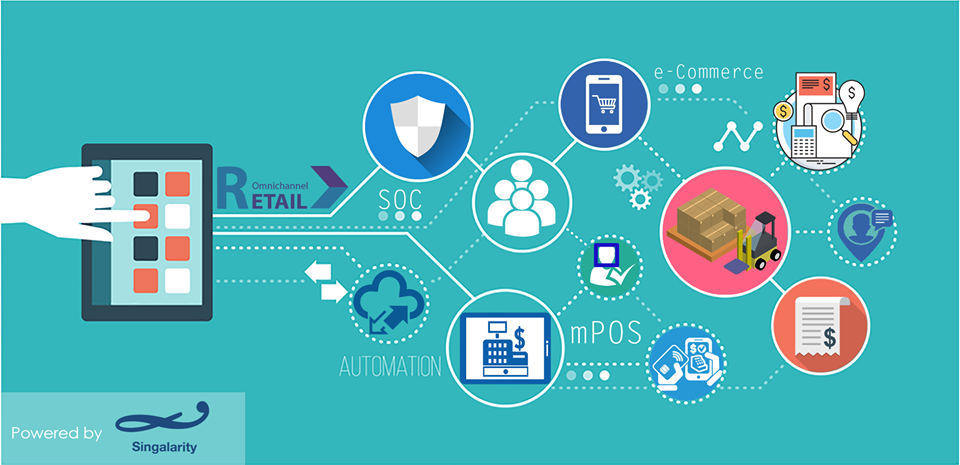-
Products
- SAS - Singalarity Authentication Server & Token Management Server
- TAE - Troubleshooting Analytic Engine
- FSOC - Forensic Security Operations Center
- ST Engineering Data Diode - Secured Data Transfer Gateway
- Rnext - Business Management Platform
- Rnext - QRPay Intra-Gateway
- Rnext - Fintech Solution Platform
- Services
- Industries
- News & Analysis
- Opportunities
- About us
Future-proofing your retail business
Retail is not dead
A lot has been discussed about the rise of e-commerce and how it is threatening retail stores. A study by Flipit Singapore has revealed that 3 out of 5 people in Singapore are online shoppers while a report published by Google and Temasek has valued Singapore's e-commerce market at US$1 billion in 2015. Paypal estimates that 73% of all adults in Singapore shopped online in 2016.
This is merely the start - e-commerce is still young, making up for 2.1% of all retail sales in Singapore. By 2025, e-commerce is set to grow to 6.7% of all retail sales in Singapore and will be worth US$5.4 billion. A 2016 PayPal survey revealed that 38% of the adults interviewed will spend even more money online in 2017, with 78% of these people citing convenience as a key reason.
Not life-threatening, but will be a significant drag on the profits of brick-and-mortar retail stores as the percentage growth of e-commerce outstrips the growth of overall retail sales.
\\\
Augmenting the retail store - not replace it
Don't fret, despite all the fear-mongering, brick-and-mortar stores will still make up a majority of retail sales. Retail stores simply will not be as profitable as they were. e-Commerce will take a sizable chunk of the retail businesses' profits.
There is still time for retailers to respond. This is because consumers still prefer to physically feel and see the product before they make purchases. In fact, despite the rise of e-commerce, 67% of survey respondents in Singapore buy products in-store at least once a month. Other than books, music, movies and video games, shopping in-store was the top preferred method of making purchases.
Instead of abandoning the retail assets they have, retailers will do well to adopt a comprehensive omnichannel approach to retail. Retailers should make use of e-commerce platforms or even set up their own e-commerce websites to sell their products globally to expand their potential market size.
Retailers can use technology to transform their existing physical retail assets to offer a better customer experience. Out goes the traditional retail concept of customers visiting the retail store, get generic advice from the sales staff, queue at the counter, make payment and leave. By using mPOS and QR code payments, sales and purchases can be made directly with the sales staff, eliminating the need for cashiers and for customers to endure long queues. Harnessing data analytics will enable salespersons to make data-based recommendations to customers.

Better still, if retailers can marry the physical infrastructure they have with e-commerce. e-Commerce retailers are already setting up retail stores to do this. For instance,
Doing so would marry the immersive, experiential experience that a physical retail store provides with the convenient and simple experience that e-commerce provides to deliver a positive customer experience.
Share:


